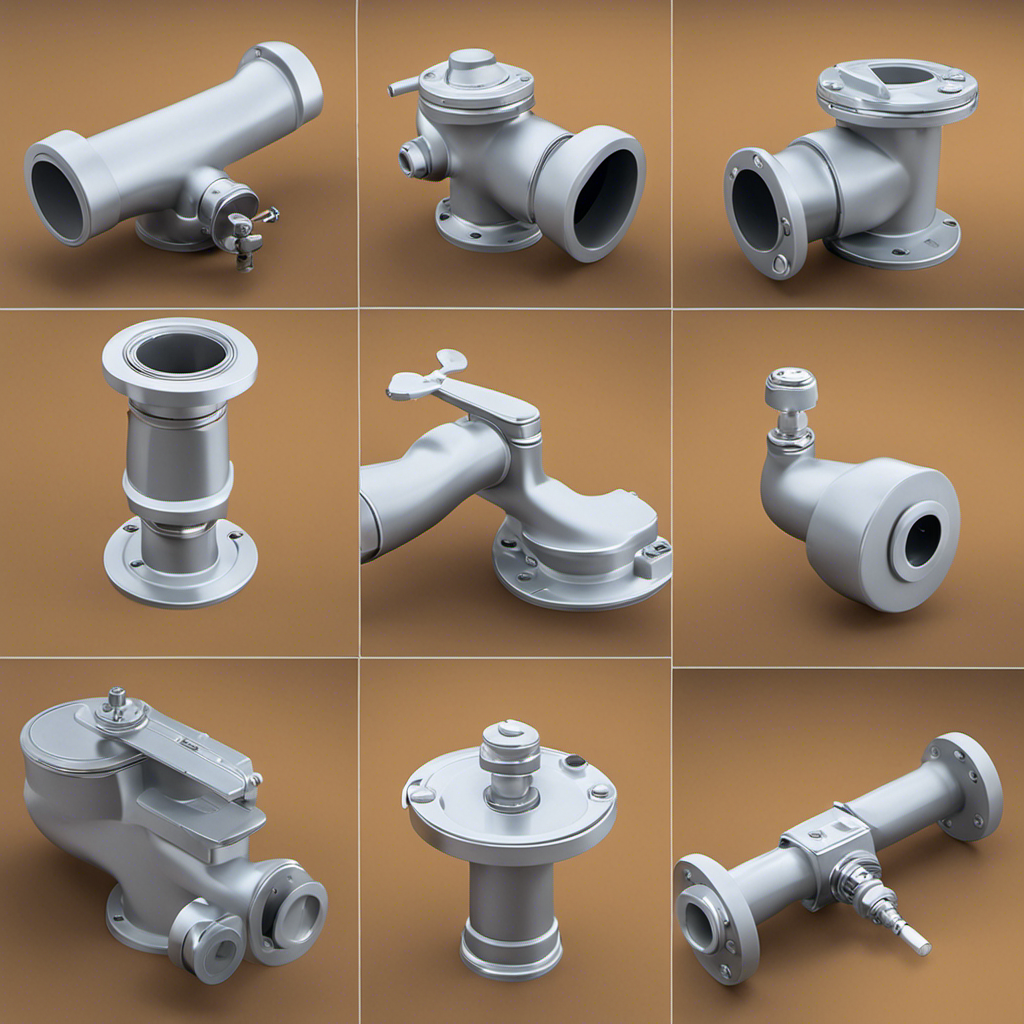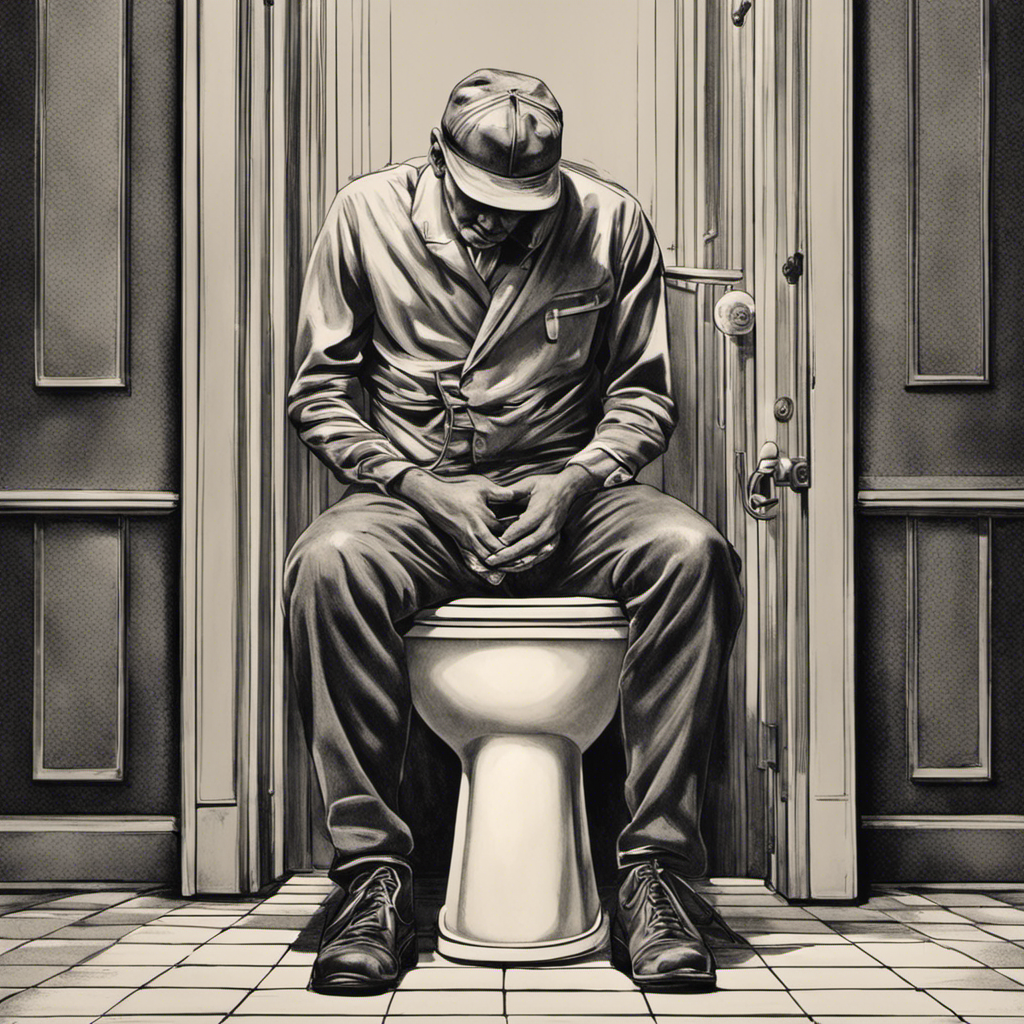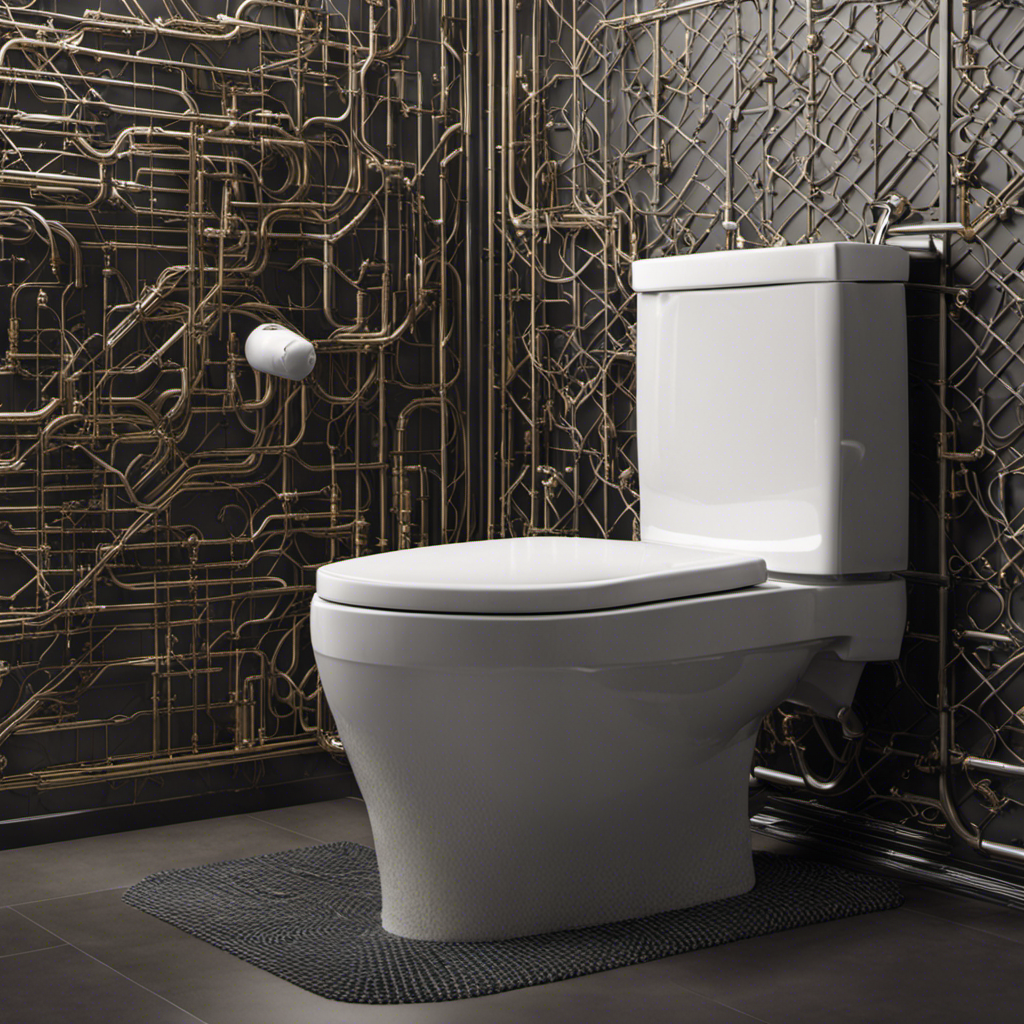I know what you’re thinking. Why bother replacing a toilet seat when it seems like such a small and insignificant task? Well, let me tell you, a comfortable and functional toilet seat is essential for a pleasant bathroom experience.
In this article, I’ll walk you through the step-by-step process of replacing a toilet seat. With the right tools and materials, you’ll be able to easily remove the old seat and install a new one, making your bathroom a more inviting space.
So, let’s get started!
Key Takeaways
- Choose a toilet seat that matches the shape and size of your toilet bowl.
- Remove the old toilet seat by unscrewing the bolts and disposing of it properly.
- Install the new toilet seat by aligning the hinge holes, sliding the bolts through, and tightening the nuts.
- Adjust and secure the toilet seat as needed, ensuring it is aligned and centered properly.
Gathering the Necessary Tools and Materials
First, you’ll need to gather the necessary tools and materials for replacing the toilet seat.
Choosing the right toilet seat is essential to ensure a proper fit and durability. Look for a seat that matches the shape and size of your toilet bowl. Measure the distance between the bolt holes to determine the correct size. Consider materials like plastic or wood, depending on your preferences.
Additionally, it’s important to follow some tips for preventing toilet seat damage. Avoid using harsh chemicals or abrasive cleaners that can degrade the seat’s finish. Encourage gentle closing of the seat and lid to prevent slamming and potential cracks. It’s also a good idea to regularly clean the seat to maintain its appearance and prolong its lifespan.
With these tools and knowledge in hand, you’ll be ready to move on to removing the old toilet seat.
Removing the Old Toilet Seat
To start, you’ll need to unscrew the bolts holding the old seat in place. Make sure you have a wrench or pliers handy to loosen them.
Once the bolts are loosened, lift the seat and lid off the toilet bowl. Be careful not to drop them or damage the porcelain.
Now, you’ll need to properly dispose of the old toilet seat. Check with your local waste management guidelines to see if it can be thrown in the regular trash or if it needs to be taken to a specific disposal facility.
Common issues encountered when removing a toilet seat include rusted or stripped bolts that may require additional tools or techniques to remove.
It’s also important to ensure the area is clean and free of any debris before installing the new seat.
Installing the New Toilet Seat
Once you’ve disposed of the old toilet seat, it’s time to position the new seat onto the toilet bowl. Proper positioning is crucial to ensure stability and a comfortable fit.
Start by locating the hinge holes on the toilet bowl and align them with the holes on the new seat. Slide the bolts through the holes and secure them with the nuts provided.
Make sure the seat is centered and straight before tightening the nuts. Use a wrench or pliers to tighten the nuts, but be careful not to overtighten and risk damaging the seat or toilet bowl.
Once the seat feels secure, give it a gentle tug to ensure it doesn’t wobble. Proper positioning and ensuring stability will guarantee a successful installation of your new toilet seat.
Adjusting and Securing the Toilet Seat
Now that you have positioned and secured the new seat, the next step is to make any necessary adjustments for a comfortable fit.
Proper positioning is essential to ensure a pleasant experience while using the toilet. Start by checking if the seat is aligned with the toilet bowl and centered properly. Adjust the seat hinges if needed, ensuring they are securely tightened.
Additionally, choosing the right toilet seat material is crucial for both comfort and durability. Consider options like plastic, wood, or cushioned seats, depending on your preferences and budget. Take into account factors such as ease of cleaning, resistance to staining, and overall longevity.
Once you have adjusted the seat to your liking, you can move on to the next section about cleaning and maintaining the toilet seat.
Cleaning and Maintaining the Toilet Seat
Ensure that you regularly clean and maintain your toilet seat to keep it hygienic and in good condition. Proper toilet seat disinfection is essential to prevent the spread of germs and maintain a clean environment. Additionally, taking preventive measures can help in preventing toilet seat stains and prolonging the lifespan of your toilet seat.
To clean and disinfect your toilet seat, follow these steps:
- Start by wiping down the seat with a disinfecting wipe or a solution of water and mild detergent.
- Pay special attention to the hinges and underside of the seat, as these areas can accumulate dirt and bacteria.
- Rinse the seat thoroughly with clean water to remove any residual cleaning solution.
- Dry the seat with a clean cloth to prevent water stains and promote longevity.
- For stubborn stains or buildup, use a non-abrasive cleaner and a soft-bristle brush to gently scrub the surface.
Frequently Asked Questions
How Often Should I Replace My Toilet Seat?
I replace my toilet seat every few years, depending on its condition. Signs of a worn out toilet seat include cracks, loose hinges, and discoloration. Different toilet seat materials have varying lifespans.
Can I Use the Same Tools and Materials to Replace a Padded Toilet Seat?
Yes, the same tools and materials can be used to replace a padded toilet seat. However, it’s important to consider the alternatives and weigh the pros and cons of padded toilet seats before making a decision.
Is It Necessary to Turn off the Water Supply Before Removing the Old Toilet Seat?
Yes, it is necessary to turn off the water supply before removing the old toilet seat. This ensures that no water leaks or spills occur during the replacement process.
How Long Does It Typically Take to Install a New Toilet Seat?
Typically, installing a new toilet seat doesn’t take long. The process involves removing the old seat, aligning the new one, and tightening the bolts. With a little effort, you’ll have a sturdy seat in no time!
Are There Any Special Considerations for Installing a Bidet Toilet Seat?
When installing bidet attachments, there are special considerations. Bidet toilet seats offer numerous benefits, such as better hygiene and water savings. They require a power source and proper plumbing connections.
Conclusion
In conclusion, replacing a toilet seat may seem like a daunting task, but with the right tools and materials, it can be a relatively simple process. By following the step-by-step instructions provided, you can easily remove the old seat, install a new one, and ensure it is adjusted and secured correctly.
While some may worry about the difficulty or complexity of this task, rest assured that with a little patience and the right guidance, anyone can successfully replace a toilet seat. So don’t be afraid to tackle this project and enjoy the satisfaction of a fresh and clean toilet seat.










